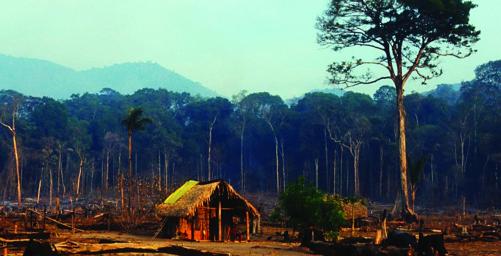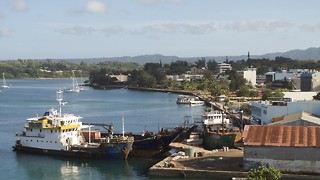Gene Pull
As species numbers plummet, profiles Edward Wilson, father of modern ecology
In the 1950s, much as today, island hopping around Baja California was a pleasant way for young researchers to pass a field season. Whilst Robert MacArthur and Edward Wilson, of Princeton and Harvard respectively, were enjoying just such a jaunt, they did what most of us would not have done – count insects. In fact, they set about cataloguing the entire species of inventory of hundreds of these islands – no small task, one would imagine, but one that revolutionised population biology and led to a career such that Wilson now sits “at Darwin’s right hand” in the pantheon of evolutionary theorists.
 The resultant Theory of Island Biogeography of 1963, is a slim, green volume containing formidable equations and only the sparsest of prose. There is one simple conclusion – that the number of species they found on a given island varied predictably with the size of that island: tiny islands have some, larger ones lots more and really big ones only a few more than that. There would, as the theory goes, be no difference between a continent-sized island and country-sized island in terms of species richness.
The resultant Theory of Island Biogeography of 1963, is a slim, green volume containing formidable equations and only the sparsest of prose. There is one simple conclusion – that the number of species they found on a given island varied predictably with the size of that island: tiny islands have some, larger ones lots more and really big ones only a few more than that. There would, as the theory goes, be no difference between a continent-sized island and country-sized island in terms of species richness.
This effect can be demonstrated experimentally – in Brazil, patches of rainforest earmarked for clearance were bought up and divided into squares of different size, from just a few hectares up to a few hundred. The biodiversity within them was measured, the land around them cleared, and then they were left to evolve. The results were astonishing – small plots degraded within months, the formerly lush rainforest drying out and becoming open grassland with only a fraction of its former diversity. The larger fragments were much less strongly affected, maintaining their species numbers in the manner predicted in the 1963 work.
Then at the age of forty, Robert MacArthur died and Wilson left behind the nascent science of biogeography, to return to his childhood passion – the natural history of ants. At that time, numerous rapid advances in evolutionary thought were being aggregated as modern ‘neo-Darwinian’ theory – amongst the most important, the principle that shared inheritance, as in siblings, gives rise to altruism. Look after your family – they share your genes, after all – but look out for your cousin less than your brother because the former is more genetically distant. This is fundamental for its quantitative insights into how our behaviour as well as our body is influenced by genetics – and, precisely because it addresses questions of the brain, it is mired in controversy and accusations of genetic determinism.
Wilson has been vilified as ultra-reductionist and a triumphant individualist
On the back of this body of work, twelve years later Wilson published Sociobiology: a new synthesis. It is a scholarly and unashamedly academic text, and its importance outside myrmecology arises from the final chapters – how these genetic theories of mind can be applied to mammals, primates and eventually humans, to predict social behaviour. Using genetics in a behavioural context makes it, in some respects, the forerunner to Dawkins’ The Selfish Gene, and these authors have in tandem been vilified as ultra-reductionist and triumphantly individualistic in outlook. In the political and social climate of 1970s Massachusetts, the whiff of racism threatened Wilson’s very academic future – and his most vociferous critic was from within Harvard itself: the late Stephen Jay Gould, Marxist and evolutionary theorist, denounced Sociobiology as a fascist treatise and comparable to eugenics.
Considering the murky associations of such a tag, it is a surprise to find that Wilson is now a Pulitzer Prize-winning author, formerly one of Time magazine’s most 25 influential people and a celebrated humanist. But as the planet faces unprecedented ecological upheaval, the rediscovery of Wilson’s early work is key to understanding how we will affect biodiversity in the years ahead. The Theory of Island Biogeography tells us that with each logging incursion and each destroyed hedgerow the rate of biodiversity loss goes ever upward. For it is a stark fact that as our planet’s natural environment is fragmented by onrushing humanity, former continents of ecology like the Amazon basin, or indeed British woodlands, become mere collections of islands, standing proud amidst a sea of humanity, palm oil, beef pasture or bypasses. And, as such, they are describable by those equations written in 1963, written when the whole issue was of merely academic importance.
 News / Cambridge Chancellor hopeful accuses opponent of electoral malpractice 9 July 2025
News / Cambridge Chancellor hopeful accuses opponent of electoral malpractice 9 July 2025 Lifestyle / Reflections on rowing10 July 2025
Lifestyle / Reflections on rowing10 July 2025 Interviews / ‘Disagreeing agreeably’: meet the three Caians chairing CUCA, CULA and CULC 9 July 2025
Interviews / ‘Disagreeing agreeably’: meet the three Caians chairing CUCA, CULA and CULC 9 July 2025 News / Meta opens £12 million lab in Cambridge 11 July 2025
News / Meta opens £12 million lab in Cambridge 11 July 2025 Theatre / What even is a welfare officer?9 July 2025
Theatre / What even is a welfare officer?9 July 2025








